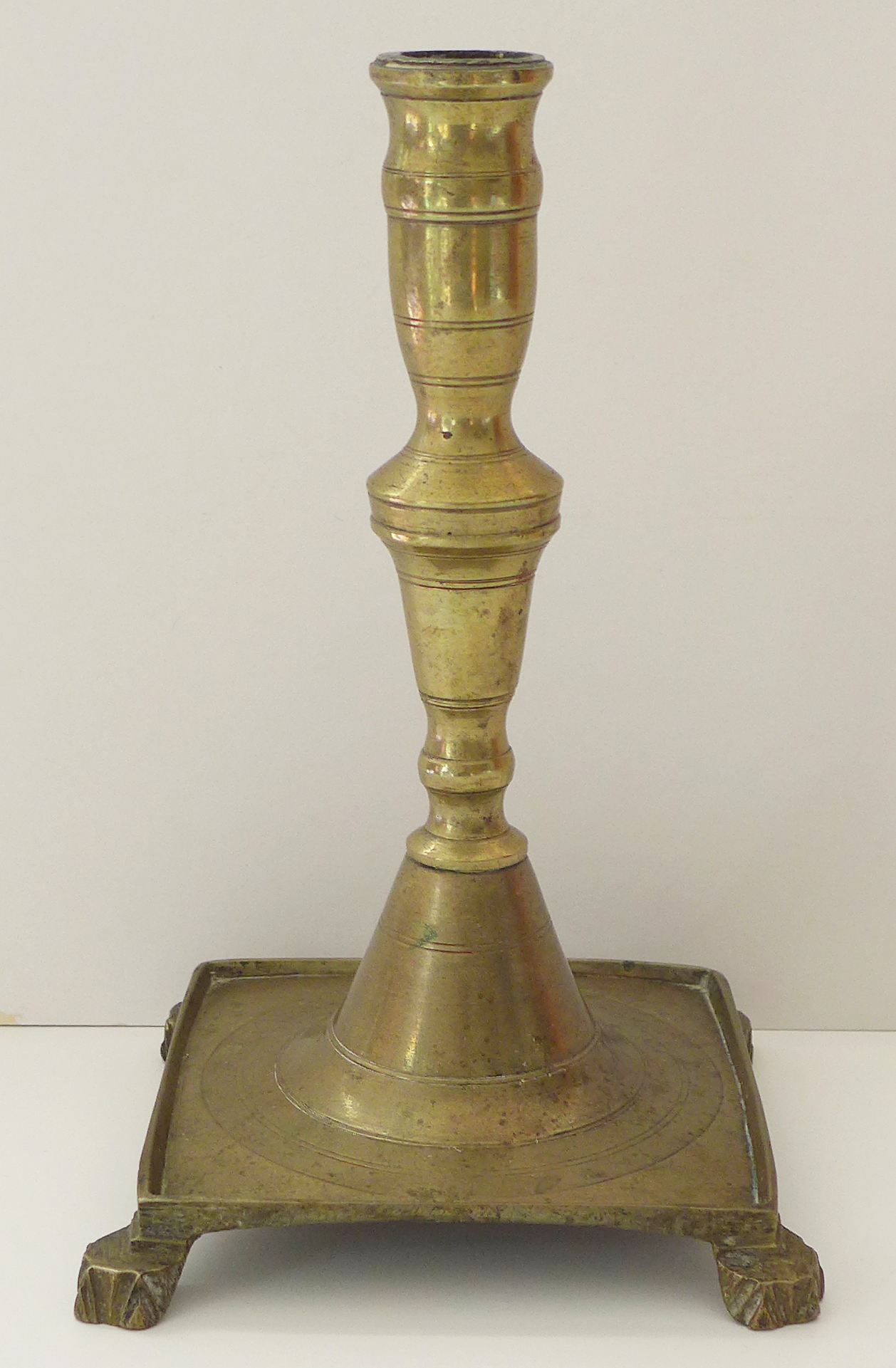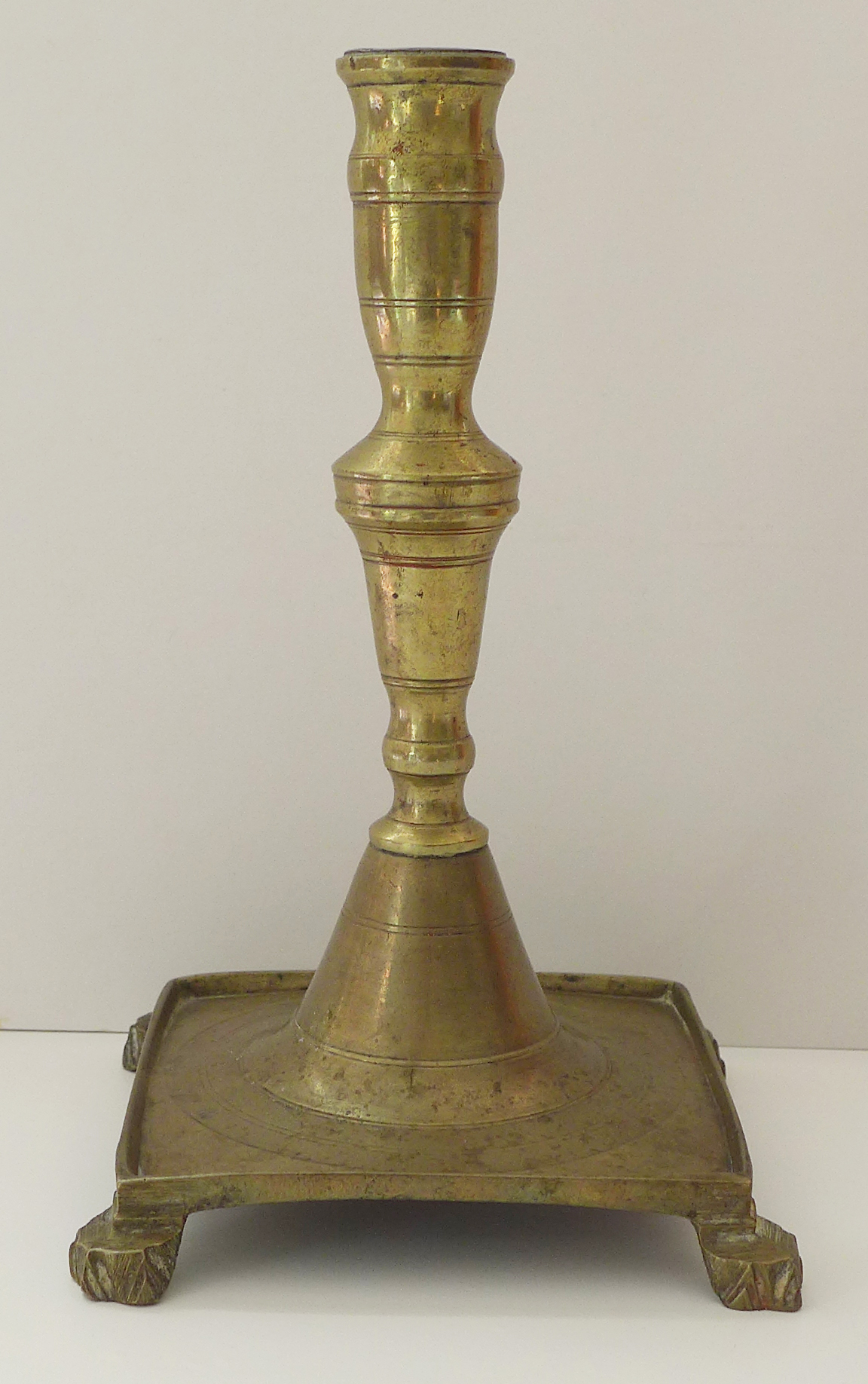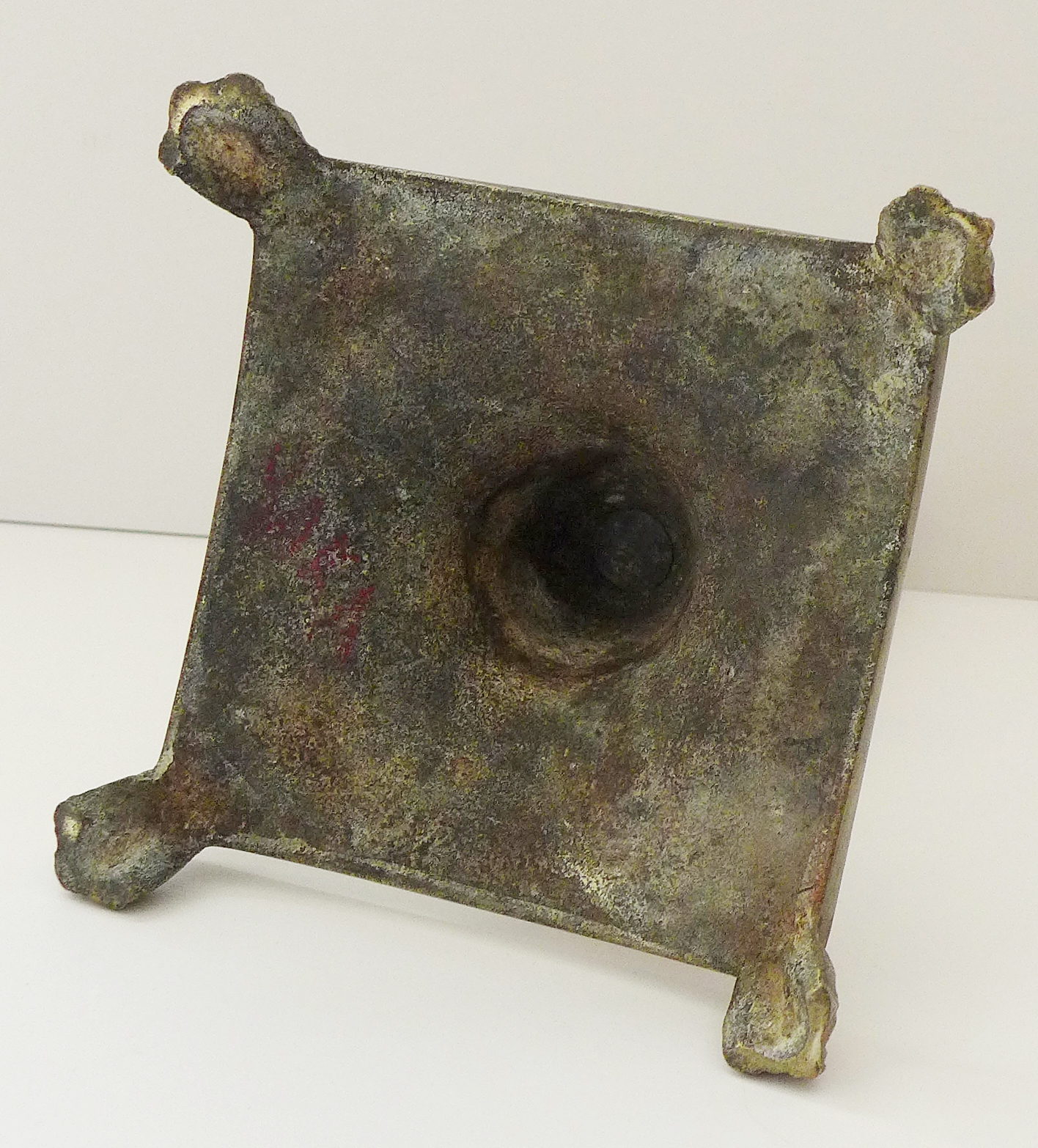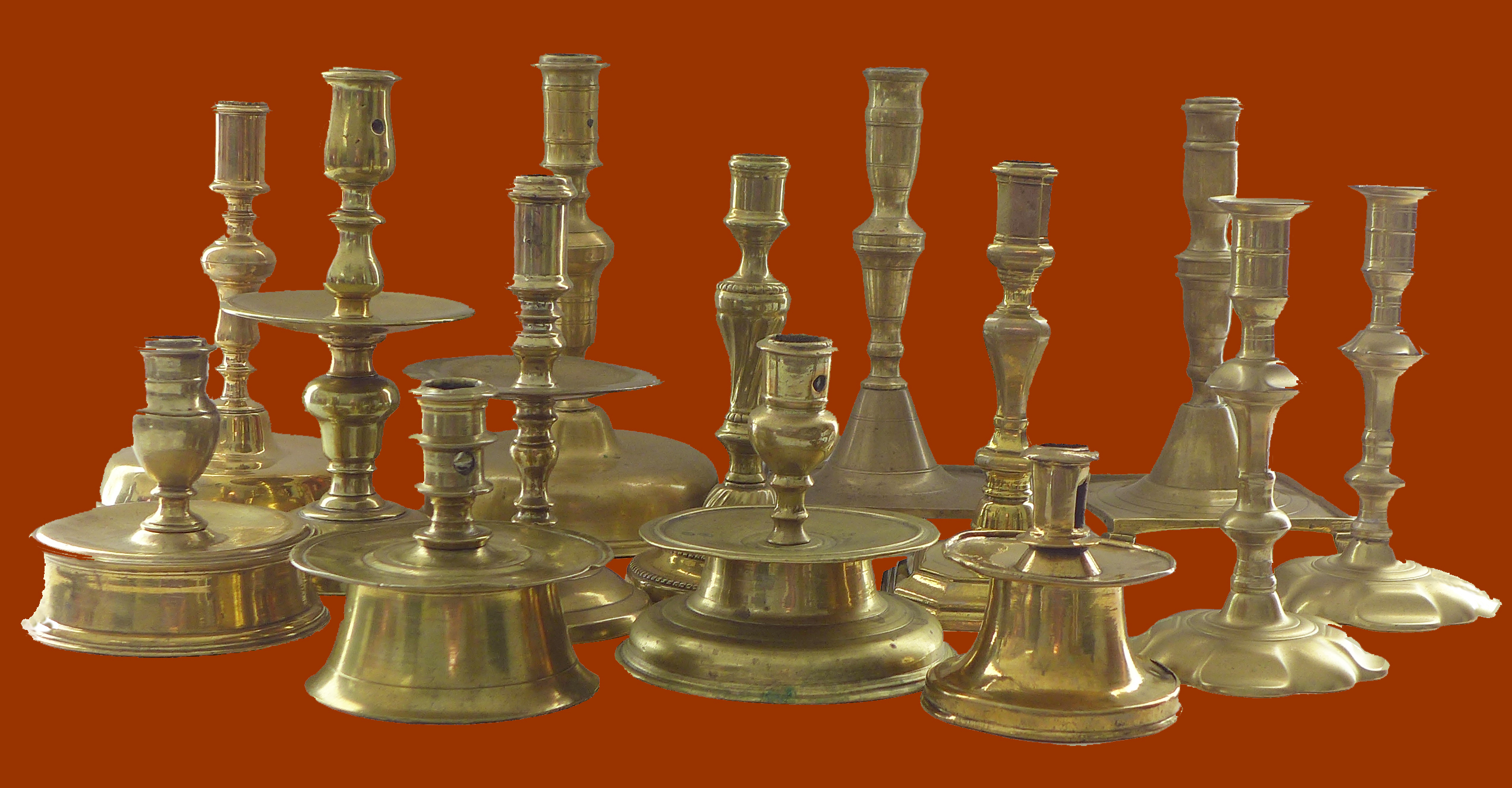
I have been fortunate to acquire a fabulous collection of 16th through 18th century brass candlesticks. I will list them separately as I can find time to make it happen so please ask for another style if you don’t see it here. Also, please see the group photo at the end of the listing which shows 12 individual and one pair of early candlesticks. However, even this group shot does not show the entire collection—so, really, ask if you have a style you are seeking.
Early brass candlesticks helped reflect light into a room, not only from the flame but also from the ambient light reflected on and magnified back into the room from the polished shiny surface of the brass. This is the same principle of using bright yellow damask for furnishings and mirrors. See for example,Kelm, Laura, “The Restoration of Stenton's Yellow Lodging Room,” https://www.incollect.com/articles/ochre-old-fustic-and-maple-stenton-s-yellow-lodging-room-restored. “Furnishings” was the period name for fabrics used to furnish the bed and to upholster seating. Furnishings were often the most valuable part of the household.
This 9” tall candlestick has a very elegant appearance showing a transition from the heavier bold turnings of the mid-16th century to the lighter, more delicate 18th century candlesticks. The square saucer base has a turned rim and sits on high feet that extend beyond the corners of the candlestick. The base has concentric incised circles surrounding the plinth. The candle cup has a tulip shape and sits atop a double ring turning halfway down the stem. The candlestick also has understated incised decoration from the candle cup to the base. The lightness of the incised rings is undoubtedly the result of polishing—every time you polish a bit of the metal is worn away. Today, this old-timer has a light muted surface as it has not been polished in years. Probably Spanish, circa 1690.
#6405 $695





